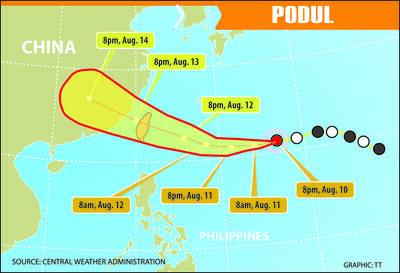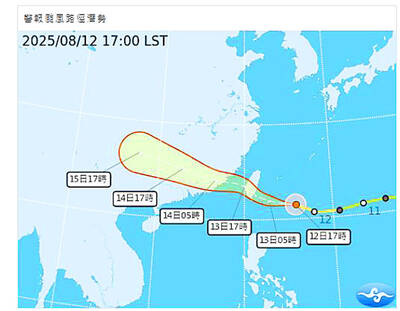A Chinese major general has called for a new national body to enforce Internet controls, while China faced fresh claims yesterday about the source of hacking attacks that hit search giant Google.
People’s Liberation Army Major General Huang Yongyin 黃永垠 said China needed to keep pace with the efforts of other big powers to fight online infiltration and attacks.
“For national security, the Internet has already become a new battlefield without gunpowder,” Huang wrote in this month’s issue of Chinese Cadres Tribune, a magazine published by the Chinese Communist Party’s influential Central Party School.
Google threatened to pull out of China last month over complaints of censorship and sophisticated hacking from within China.
Huang’s comments appeared after Western media reports said a vocational school whose graduates include military recruits was one source of the hacker attack on Google. The reports said the author of spyware used in the assault had government ties.
US government analysts believe the program’s creator is a Chinese security consultant in his 30s who posted parts of the code on a hacker forum and described it as something he was “working on,” the Financial Times reported yesterday.
He works as a freelancer and did not launch the attack, but Chinese officials had “special access” to his programming, the paper said, quoting a single, unnamed government researcher.
“If he wants to do the research he’s good at, he has to toe the line now and again,” the researcher was quoted as saying.
Huang’s comments underscore the influential currents within the Chinese government that see the Internet as a key security concern.
“Lawless elements and hostile forces at home and abroad have increasingly turned to the Internet to engage in crime, disruption, infiltration, reactionary propaganda and other sabotage activities,” wrote Huang, who appears to play no direct role in China’s online policy.
The magazine was dated Feb. 6, but was delivered to subscribers yesterday.
The government needs to surmount the fragmented control of the Internet to confront these problems, preferably with a national administrative system, Huang said.
His concerns are matched by worries overseas about attacks from within China.
The Financial Times report quoted unidentified sources backing an earlier claim in the New York Times (NYT) that analysts had traced the online attacks to two Chinese colleges, Jiaotong University in Shanghai and the Lanxiang Vocational School.
The two schools have denied the reports. However, since the NYT report the Lanxiang school in Shandong Province has reported a spike in enrolment inquiries.
“We have been receiving phone calls from all over the country asking about our computer science program, which is one of the most popular programs in our school,” an unnamed recruitment teacher told the state-run Global Times.
A woman in the school’s enrolment office, when asked by reporters whether the number of inquiries had spiked in recent days since the report, said “yes,” but declined further comment.
In other Internet news, Chinese President Hu Jintao (胡錦濤) has set up a microblogging account that has drawn thousands of followers as of yesterday.
The account was set up on a microblogging platform operated by the People’s Daily.

DEFENSE: The first set of three NASAMS that were previously purchased is expected to be delivered by the end of this year and deployed near the capital, sources said Taiwan plans to procure 28 more sets of M-142 High Mobility Artillery Rocket Systems (HIMARS), as well as nine additional sets of National Advanced Surface-to-Air Missile Systems (NASAMS), military sources said yesterday. Taiwan had previously purchased 29 HIMARS launchers from the US and received the first 11 last year. Once the planned purchases are completed and delivered, Taiwan would have 57 sets of HIMARS. The army has also increased the number of MGM-140 Army Tactical Missile Systems (ATACMS) purchased from 64 to 84, the sources added. Each HIMARS launch pod can carry six Guided Multiple Launch Rocket Systems, capable of

Tropical Storm Podul strengthened into a typhoon at 8pm yesterday, the Central Weather Administration (CWA) said, with a sea warning to be issued late last night or early this morning. As of 8pm, the typhoon was 1,020km east of Oluanpi (鵝鑾鼻), Taiwan’s southernmost tip, moving west at 23kph. The storm carried maximum sustained winds of 119kph and gusts reaching 155kph, the CWA said. Based on the tropical storm’s trajectory, a land warning could be issued any time from midday today, it added. CWA forecaster Chang Chun-yao (張竣堯) said Podul is a fast-moving storm that is forecast to bring its heaviest rainfall and strongest

TRAJECTORY: The severe tropical storm is predicted to be closest to Taiwan on Wednesday and Thursday, and would influence the nation to varying degrees, a forecaster said The Central Weather Administration (CWA) yesterday said it would likely issue a sea warning for Tropical Storm Podul tomorrow morning and a land warning that evening at the earliest. CWA forecaster Lin Ting-yi (林定宜) said the severe tropical storm is predicted to be closest to Taiwan on Wednesday and Thursday. As of 2pm yesterday, the storm was moving west at 21kph and packing sustained winds of 108kph and gusts of up to 136.8kph, the CWA said. Lin said that the tropical storm was about 1,710km east of Oluanpi (鵝鑾鼻), Taiwan’s southernmost tip, with two possible trajectories over the next one

GET TO SAFETY: Authorities were scrambling to evacuate nearly 700 people in Hualien County to prepare for overflow from a natural dam formed by a previous typhoon Typhoon Podul yesterday intensified and accelerated as it neared Taiwan, with the impact expected to be felt overnight, the Central Weather Administration (CWA) said, while the Directorate-General of Personnel Administration announced that schools and government offices in most areas of southern and eastern Taiwan would be closed today. The affected regions are Tainan, Kaohsiung and Chiayi City, and Yunlin, Chiayi, Pingtung, Hualien and Taitung counties, as well as the outlying Penghu County. As of 10pm last night, the storm was about 370km east-southeast of Taitung County, moving west-northwest at 27kph, CWA data showed. With a radius of 120km, Podul is carrying maximum sustained